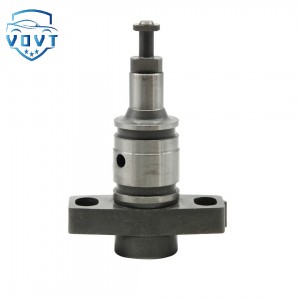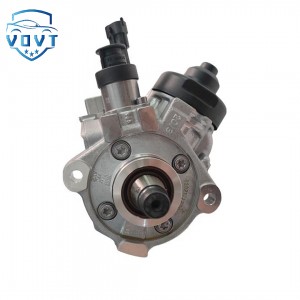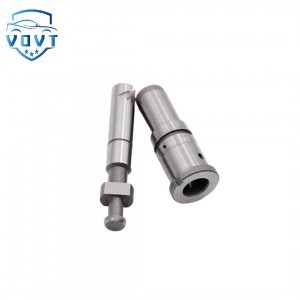Good Price Diesel Pump Head Rotor for CAT Engine 320D Fuel Injection Pump Head Engine Spare Parts
products description
| Reference. Codes | 320D |
| Application | / |
| MOQ | 2PCS |
| Certification | ISO9001 |
| Place of Origin | China |
| Packaging | Neutral packing |
| Quality Control | 100% tested before shipment |
| Lead time | 7~15 working days |
| Payment | T/T, L/C, Paypal, Western Union or as your requirement |
Introduction of pump head rotor
Structure and composition
The pump head of the oil pump is usually composed of a pump body, an impeller (or a plunger), a driving mechanism, etc. The pump body is a sealed cavity that provides space for the delivery of fuel. The impeller (or plunger in some types of oil pumps) is the core component for achieving fuel pumping, which pushes the fuel through rotation or reciprocating motion. The driving mechanism is responsible for transmitting power to the impeller or plunger so that it can operate according to a certain law and speed. For example, in an electric fuel pump, the driving mechanism is usually a gear or turbine driven by a motor, while in a mechanical fuel pump, the driving mechanism may be connected to the camshaft or crankshaft of the engine to drive the pump head through mechanical transmission.
Working principle
The working principles of different types of oil pump heads are different. For the common centrifugal electric fuel pump head, when the motor drives the impeller to rotate, the blades on the impeller will drive the fuel to rotate together, and the fuel will be thrown to the edge of the impeller under the action of centrifugal force, thereby generating a pressure difference, so that the fuel is sucked into the pump head from the oil inlet, and then pressed out from the oil outlet to achieve fuel delivery. As for the plunger fuel pump head, the plunger reciprocates in the pump barrel under the action of the driving mechanism. When the plunger moves outward, negative pressure is formed in the pump barrel, and the fuel is sucked from the fuel inlet; when the plunger moves inward, the fuel is compressed and discharged through the fuel outlet. The fuel is continuously pumped out through the continuous reciprocating motion of the plunger.
Function
Establishing fuel pressure: The main function of the fuel pump head is to establish sufficient pressure in the fuel system so that the fuel can overcome the resistance of the injector and the pressure loss of the fuel line, and be sprayed into the combustion chamber or intake manifold of the engine at a certain pressure to ensure that the fuel can be well atomized and burned. For example, in modern electronic fuel injection engines, the fuel system needs to maintain a certain pressure range, generally around 300-500kPa, and the fuel pump head maintains this pressure by continuously pumping oil.
Precisely control the fuel flow: According to different working conditions of the engine, such as idling, acceleration, deceleration, etc., the fuel pump head needs to accurately control the fuel flow. This is achieved by controlling the speed of the pump head or the stroke of the plunger. For example, when the engine is idling, less fuel supply is needed, and the oil pump head will reduce the speed or reduce the plunger stroke to reduce fuel output; when the engine is accelerating, it will increase the speed or increase the plunger stroke to provide more fuel.
Common faults and impacts
Impeller wear or damage: After long-term use, the impeller blades may be worn or damaged due to impurities in the fuel, friction caused by high-speed rotation, etc. Impeller wear will cause the fuel pump's oil pumping capacity to decrease, insufficient fuel pressure, and engine startup difficulties, weak acceleration, and shaking. In severe cases, impeller damage may cause the fuel pump to fail to work properly and the engine to stall.
Poor pump body seal: Aging, damage or improper installation of the pump body seal will cause fuel leakage. Fuel leakage will not only cause fuel waste, but also may form a flammable and explosive environment around the vehicle, posing a safety hazard. At the same time, poor sealing will prevent the fuel pump from building up enough pressure, affecting the normal operation of the fuel system.
Drive mechanism failure: If the drive mechanism fails, such as motor failure, gear wear, loose transmission chain, etc., the oil pump head will not operate normally or operate unsteadily. This will interrupt or destabilize the fuel supply, thus affecting the normal operation of the engine, causing problems such as engine shaking, power loss, or even failure to start.
Maintenance and Care
Regularly replace the fuel filter: The fuel filter can filter impurities and water in the fuel, prevent it from entering the oil pump head, and reduce the risk of wear and blockage. It is generally recommended to replace the fuel filter regularly according to the requirements of the vehicle manual, usually every 20,000-30,000 kilometers or 1-2 years, to ensure the cleanliness of the fuel and extend the service life of the oil pump head.
Use high-quality fuel: Poor-quality fuel may contain more impurities, water and additives, which can easily damage the oil pump head. Therefore, high-quality fuel from regular gas stations should be selected to avoid using poor-quality fuel to reduce corrosion and wear on the oil pump head.
Avoid low fuel level: If the fuel level is too low, the oil pump head will be exposed to the air for a long time, which may easily cause the pump head to overheat and accelerate the wear of components. At the same time, a low fuel level may also cause the oil pump to inhale air, affecting the normal delivery and pressure establishment of the fuel. Therefore, you should try to avoid the fuel level being too low, refuel in time, and keep enough fuel in the fuel tank.























